Community Collections for ‘Ōhi‘a
If you are not from Hawai‘i, you may not have heard of ‘ōhi‘a. If you are from Hawai‘i, you have almost certainly heard of or seen these forest trees in some form. Featured in hundreds of mele and ‘oli (traditional songs and chants), they are also used in lei, hula, and other traditions. The strong wood is used for building, and is a physical embodiment of the Hawaiian god Kū. Just as ‘ōhi‘a is integral to the Hawaiian culture, the various species of ‘ōhi‘a (Metrosideros polymorpha and closely related species) are critical to Hawaiian ecosystems, providing food and habitat for native animals and understory plants, and services like watershed protection to humans. And they are facing a serious, and growing, threat: Rapid ‘Ōhi‘a Death, or ROD.
Rapid ‘Ōhi‘a Death is caused by two wood-dwelling fungi, Ceratocystis lukuohia and C. huliohia. These fungi were new to science and recently described. The more virulent of the two, C. lukuohia, is new to Hawai‘i, as evidenced by its unprecedented destructive and rapid spread. Being on islands makes the native flora especially vulnerable to invasive pathogens that disturb the natural balance of ecosystems, which evolved in isolation for millions of years. Unfortunately, these fungi can be spread both by wind and by human mediated movement, making them not only pathogens that wreak havoc on islands, but ones that are moving quickly.
Rapid ‘Ōhi‘a Death is considered a crisis. Fortunately, a large interisland, interagency team of collaborators is working to address the many aspects of the threat of ROD, including pathology, ecology, and other scientific research, rapid response planning and implementation, monitoring, education, and a massive outreach campaign to help slow the spread. Lyon Arboretum, a founding member of the Hawai‘i Seed Bank Partnership, is taking the lead on banking seeds of the various species of ‘ōhi‘a.
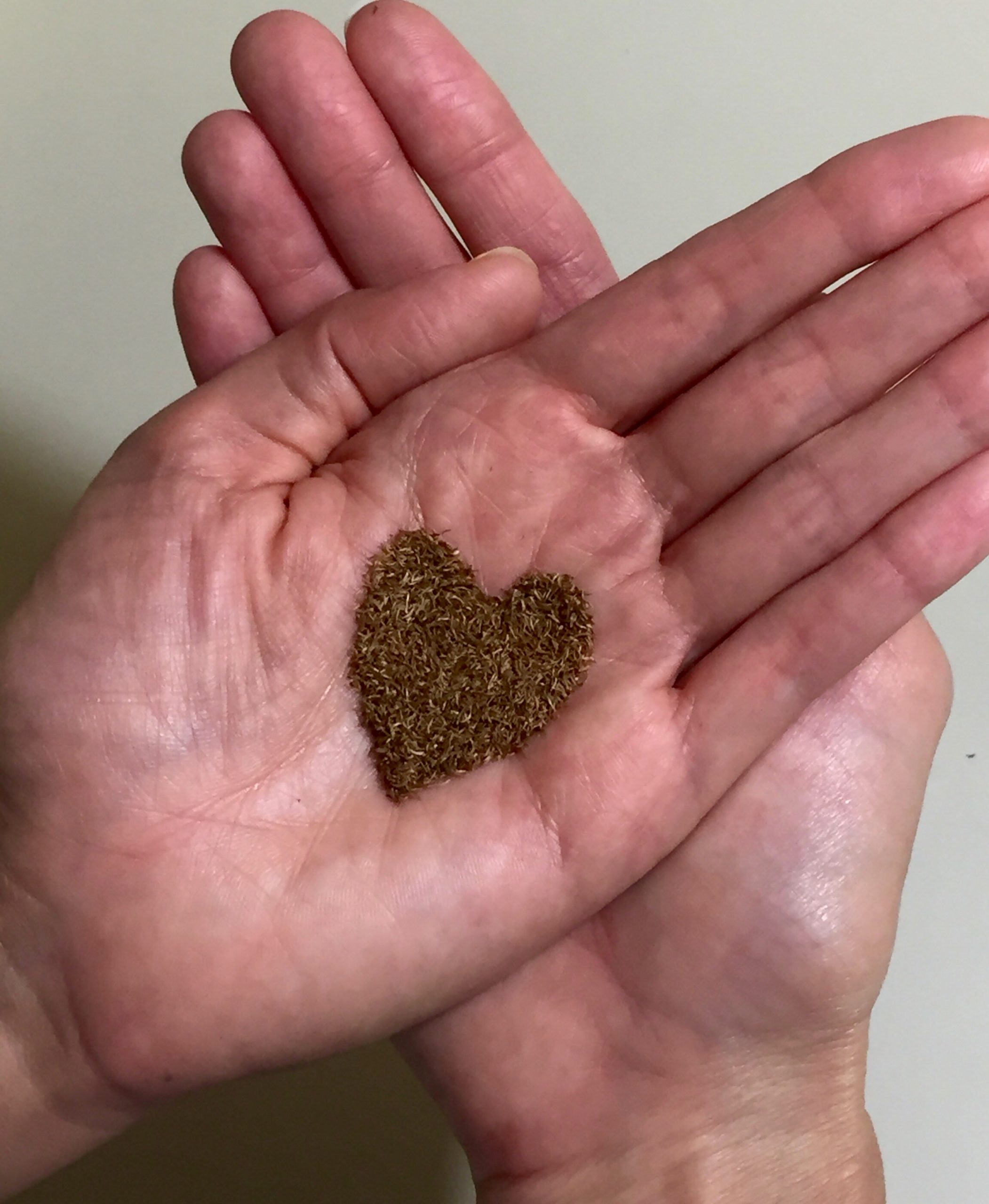
The Rapid ‘Ōhi‘a Death (ROD) Seed Banking Initiative seeks to preserve the natural genetic diversity of ‘ōhi‘a. The initiative coordinates the systematic collection of seeds from across seed zones on each island, and stores the collections in seed banks for future restoration and disease-resistance testing. Working with nine varieties of Metrosideros polymorpha, two varieties of M. waialealae, M. macropus, M. rugosa, and M. tremuloides – all of which are endemic to the Hawaiian Islands, and across the multiple islands being impacted by ROD means that this effort is no simple task.
-
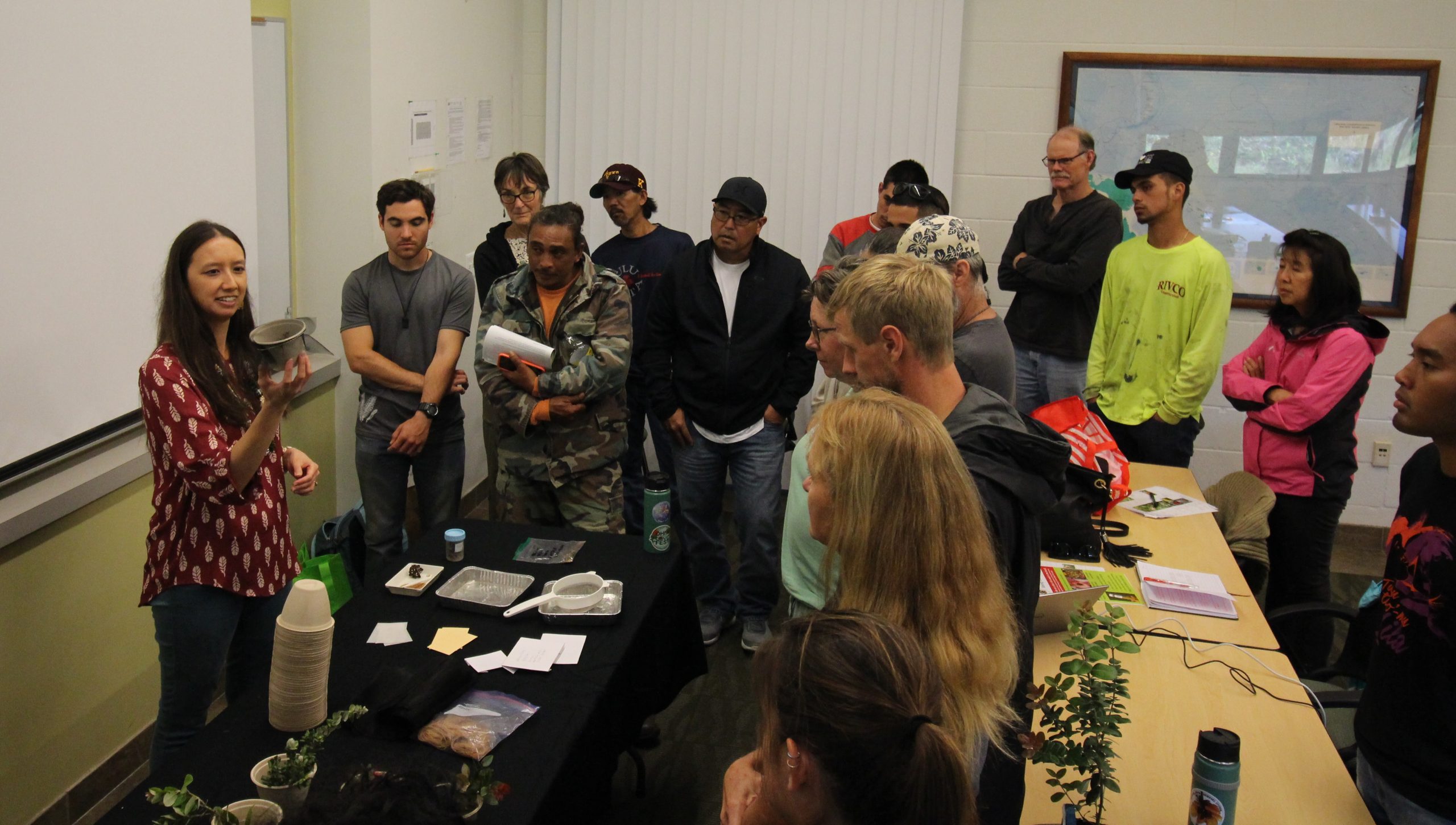
The workshops Marian has led throughout Hawai’i have brought community members and conservation practitioners together to help save ‘Ōhi‘a. Photo credit: J.B. Friday, courtesy of the University of Hawaii, Mānoa. -
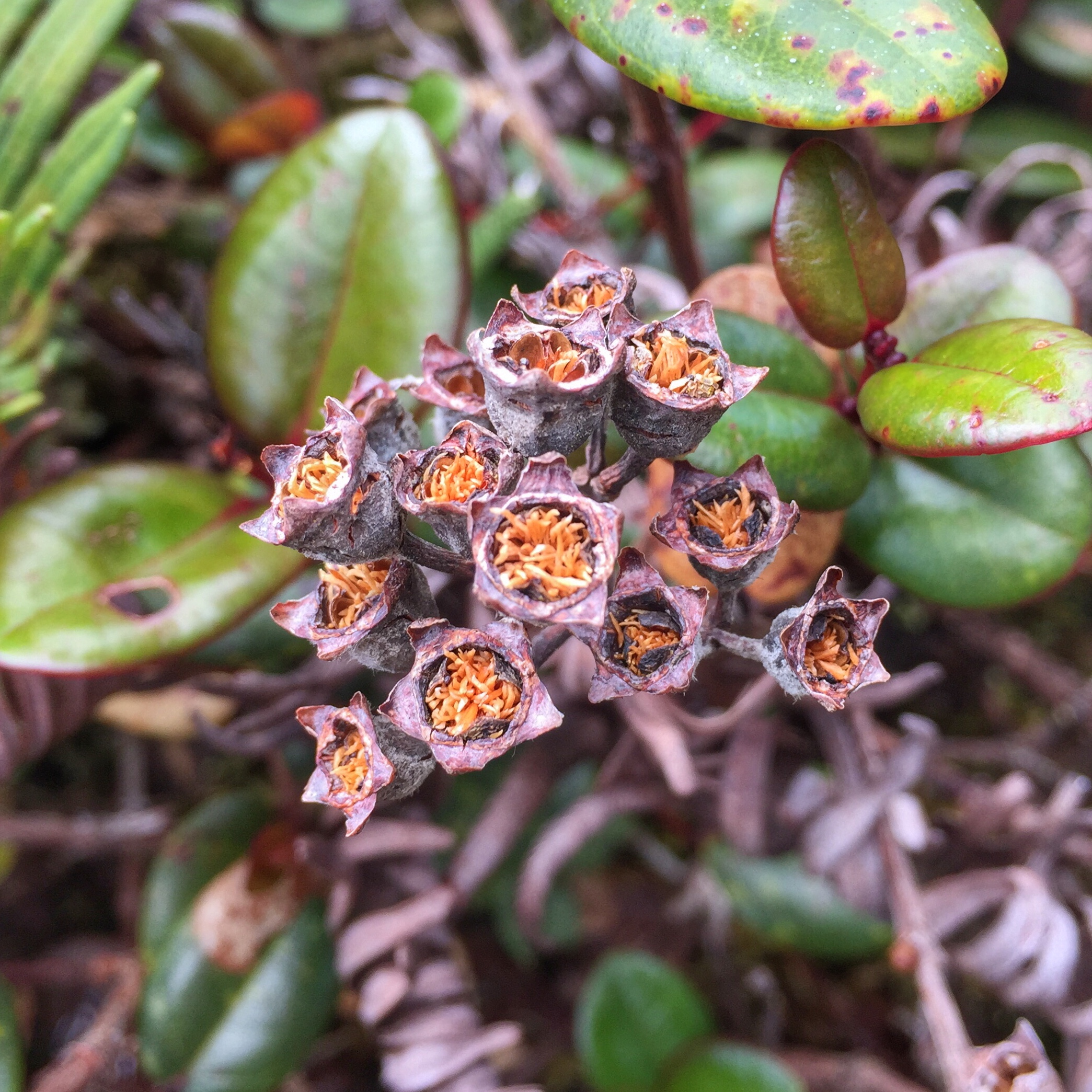
Seeds of ‘Ōhi‘a (Metrosideros polymorpha var. pumila) on Moloka’i, ready for collection. -
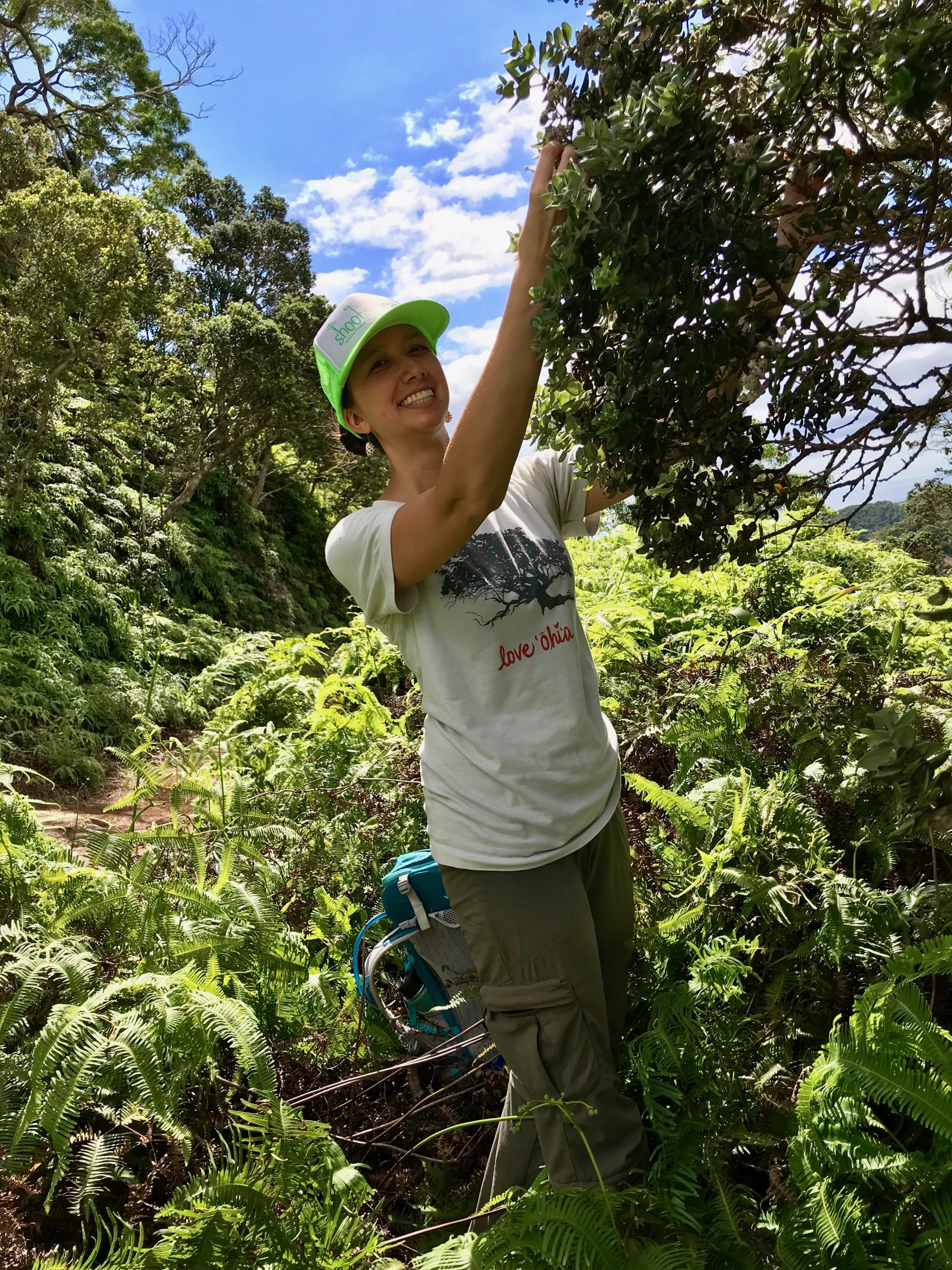
Lyon Arboretum Seed Bank Manager, Marian Chau, Ph.D., makes a seed collection from Metrosideros polymorpha var. polymorpha on O’ahu, while sporting a shirt that shares her love for these culturally important trees.
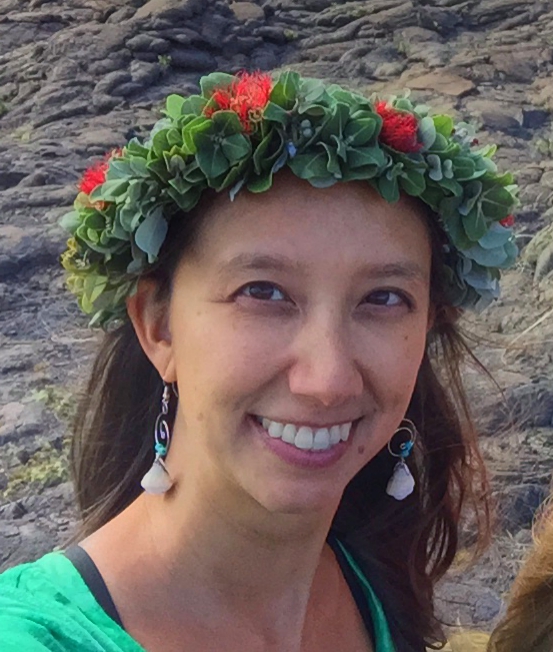
Collaboration is essential in this project, as there is so much work to be done. The Hawai‘i Seed Bank Partnership has been critical for banking seeds locally on each island and backing up collections within islands. In addition to Lyon Arboretum (O‘ahu), the primary partners are Hawai‘i Island Seed Bank, Ulu Lehulehu Seed Bank (Hawai‘i Island), Maui Nui Botanical Garden (Maui), U.S. Army Natural Resources Program (O‘ahu), National Tropical Botanical Garden (Kaua‘i), and Kaua‘i Division of Forestry & Wildlife. However, these seed banks cannot do all of the necessary seed collecting without help from the broader community. For the Seed Conservation Laboratoy Manager at Lyon Arboretum, Marian Chau, Ph.D., outreach training has been one of the best parts of the project.
Marian has led 28 Ōhi‘a Seed Conservation Workshops statewide. Across five islands, over 500 people have been trained to identify different types of ‘ōhi‘a, collect the seeds, and prepare them for submission to the seed banks. Provided free of charge, thanks to generous funders, this has allowed Marian and partners to open the workshops broadly to the local community. Many participants have been people who already work in conservation, but many others have been concerned citizens who just want to help. The rich cultural connections to native plants have created a deeply rooted tradition of stewardship in Hawai‘i, and so hula and other cultural practitioners, teachers, hikers, tour operators, and many more have become involved. “It is always exciting to open people’s eyes to the wonder of seeds, especially if they have never seen ‘ōhi‘a seeds before. This has been such a rewarding outreach effort, seeing how folks from so many walks of life care deeply about our ‘aina (land/earth) and want to help save ‘ōhi‘a,” Marian states.
The public’s engagement with the project has been empowering. People have many reasons for caring about their natural world, and most folks would really love to help, but they do not always know how or where to start. When given options, some people want to get in the field to collect seeds and personally connect with the plants, while some are fascinated by the science and want to help process the seeds in the lab. Some want to provide community venues or materials or local networking assistance, while some want to donate money to support these efforts. Some want to do all of the above. The public’s response has served as proof that in Hawaiian culture, the natural world is a direct extension of ‘ohana (family). With Marian and the rest of Lyon Arboretum, many amazing partners, and the community all as family, the ‘ōhi‘a and the forests they create have a chance of weathering the ROD crisis.
Photos (except where noted) by Marian Chau, courtesy of the Lyon Arboretum.